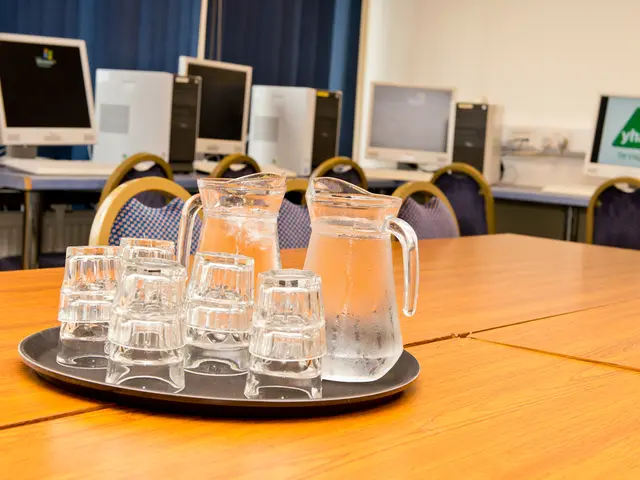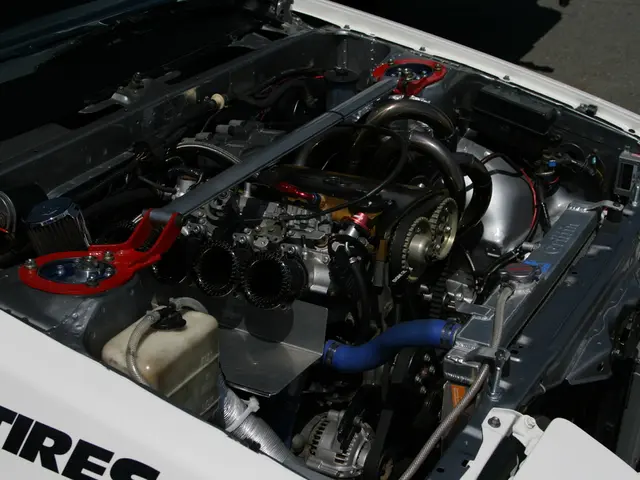Electrification of vehicles becomes adaptable thanks to Digital Twinning technology
Transforming Electric Vehicle Electronics Development with Digital Twin Technology
Digital twin technology is revolutionizing the way electric vehicle (EV) electronics are designed, developed, tested, and integrated. This innovative technology creates a high-fidelity virtual replica of physical EV systems, such as electronic control units (ECUs), battery management systems (BMS), power electronics, and communication networks.
By enabling detailed physics-based and AI-enhanced simulations, digital twins allow for risk-free virtual experimentation with different designs and system configurations. This accelerates iterations and innovation in EV electronics, particularly in complex multi-physics domains like battery electrochemistry and thermal management.
One of the key benefits of digital twins is their ability to provide a virtual testbed to simulate real-world operational scenarios. This virtual testing reduces dependence on costly and time-consuming physical tests while improving reliability and performance predictions.
Digital twins also support seamless integration and optimization of electronic systems within the broader vehicle architecture. Hybrid digital twins can be embedded into system-level simulation frameworks, enabling co-simulation of battery systems with vehicle powertrains and control software.
In addition, digital twins maintain synchronization with the physical vehicle via sensor data, allowing for continuous performance optimization, remote diagnostics, and predictive maintenance throughout the EV lifecycle.
The use of digital twin technology is not limited to the EV industry. It is being widely adopted in various fields such as manufacturing, healthcare, construction, and smart cities. Digital twins can help optimize different aspects of the product throughout the design and manufacturing processes.
The potential of digital twin technology in the context of vehicle electrification is further explored in the paper titled "Digital twin technology in electric and self-navigating vehicles: Readiness, convergence, and future directions." Another paper, "Generic Multi-Layered Digital-Twin-Framework-Enabled Asset Lifecycle Management for the Sustainable Mining Industry," discusses the use of digital twin technology in other industries.
Digital twins can also support continuous integration and validation of embedded software, reducing time and cost, and supporting more robust testing and improvement processes. They can help design and validate electronics, simulate extreme conditions, and test robustness and failure modes without damaging hardware.
Moreover, digital twins can simulate edge cases and fault conditions that are hard to recreate physically, aiding in faster testing and debugging. They can be tied into hardware-in-the-loop (HIL) and software-in-the-loop (SIL) testing environments for faster iteration and innovation.
Perhaps most importantly, digital twins provide a single source of truth for cross-functional teams, enabling concurrent development and integration. This improves collaboration and reduces the number of physical prototypes required, saving cost and time.
In summary, digital twin technology transforms EV electronic system development by providing an agile, adaptive, and data-driven approach that cuts development time and cost, enhances accuracy, supports complex system integration, and enables ongoing optimization beyond initial deployment.
- Digital twin technology is also being used in various industries, such as manufacturing, healthcare, and construction, to optimize and streamline product design and manufacturing processes.
- In the automotive industry, digital twins can be embedded into system-level simulation frameworks, enabling co-simulation of battery systems with vehicle powertrains and control software.
- Podcasts discussing digital twin technology in the context of vehicle electrification highlight its potential for continuous integration and validation of embedded software, reducing development time and cost.
- Data-and-cloud-computing technology plays a crucial role in maintaining synchronization between the digital twin and the physical vehicle, allowing for continuous performance optimization, remote diagnostics, and predictive maintenance.




